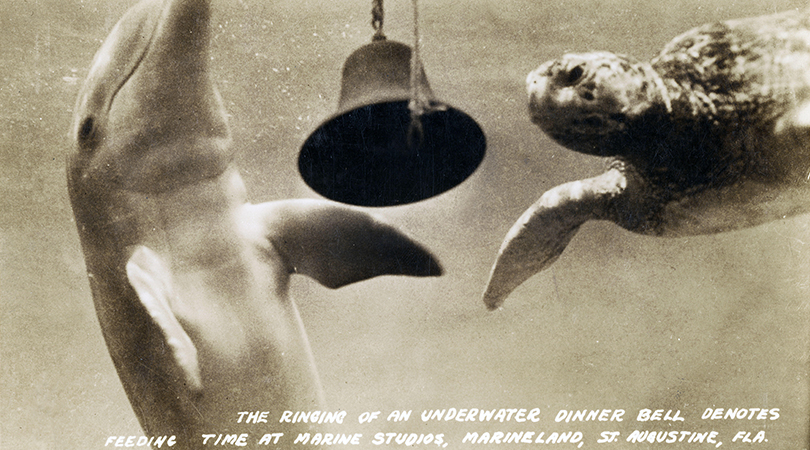The clear, resonant ring of a bell reverberating from on high is one of the most recognizable sounds the world over – at least on land. But what if that same bell were rung underwater? Would the current carry the melodious ting-a-ling beneath the waves? To find an answer, we turned to Professor Ronald A. Roy, a principal investigator at the Physical Acoustics Laboratory at the University of Oxford. His response was concise: "It will sound like a metallic thud."
To understand why a bell underwater would sound muted, dull, and short-lived, we need to look at the physics of how sound behaves in water compared to air, and how the properties of vibration, pitch, damping, and resonance are all affected by immersion. Let's start with the basics.
How does a bell produce sound?
Like all idiophones, a bell produces sound through vibration. When struck, the metal vibrates in complex, layered patterns that cause the surrounding air to vibrate as well. These vibrations travel outward as pressure waves, which is what we perceive as sound. The frequencies of these vibrations determine the pitch, while the energy stored in the vibrating metal and its ability to sustain vibration determine the resonance and the quality factor (Q), which is a measure of how long the bell continues to ring.
When a bell is submerged, all of these properties are dramatically altered because the surrounding medium – water – is very different from air. In air, a bell’s vibration encounters relatively little resistance from the surrounding medium. Air is light and compressible, so it allows the bell to freely move and efficiently radiate sound energy. That sound can roll across great distances. Underwater, however, the situation changes completely.
How do acoustics change beneath the surface?
Water is about 800 times denser than air, meaning the bell now has to move a much heavier medium as it vibrates. This added inertia is known as mass loading, or the water's weight on the bell. The bell effectively "feels heavier" to itself because each vibration must push and pull the surrounding water, which resists motion.
As a result, the vibration frequency decreases as the denser medium resists the bell’s oscillations, stretching the time it takes to complete each vibration cycle. This leads directly to a drop in pitch. The tone you hear underwater would be lower and duller than the bell’s normal tone in air.
However, the shift in pitch is not just a simple lowering of tone. The harmonic structure of the bell also changes. Bells normally produce a rich combination of overtones, but underwater, many of these higher-frequency components are suppressed. The dense water dampens small, rapid vibrations more strongly than slow, large ones, meaning the higher harmonics fade first.
So, the underwater sound isn’t just lower, it’s flatter and less musical with much of the characteristic chiming quality lost.
Let's dive more into the damping effect.
Every vibrating object loses energy over time as it transfers motion into the surrounding medium. In air, this loss is relatively small, which is why a bell can continue ringing for several seconds after being struck.
In water, though, the damping effect is massive. Water’s density and viscosity mean that each vibration transfers far more energy into the surrounding fluid. Most of the energy that would have gone into sustained vibration is instead quickly dissipated. The bell’s motion is absorbed as acoustic and thermal energy in the water, and the vibrations die out rapidly.
From a physical standpoint, the damping coefficient (a measure of how quickly oscillations decay) is much higher in water than in air. This is why, when you try to strike a bell underwater, it produces only a short, muffled "thunk" instead of a long, ringing tone.
As we mentioned, the Q factor, or quality factor, describes how efficiently an object stores vibrational energy relative to how quickly it loses that energy. A high-Q system (like a finely tuned bell in air) rings for a long time with a pure tone. A low-Q system (like a bell underwater) loses energy quickly and stops ringing almost immediately. When submerged, a bell’s Q factor plummets because of the rapid damping by the surrounding water.
But a bell will still make a sound underwater, right?
Yes, a bell underwater will still create a sound when struck, but there's a paradox here we should further examine. Although a bell’s vibrations are strongly damped underwater, sound actually travels faster and farther in water than in air – about 1,500 meters per second in water compared to 343 meters per second in air. So why does a submerged bell sound so weak?
The answer lies in impedance mismatch and inefficient coupling. While water transmits sound efficiently once it’s generated, it doesn’t let the bell vibrate efficiently in the first place. Much of the mechanical motion of the bell is suppressed before significant sound energy can even be radiated. What little sound is produced travels far, but it’s faint and lacking in musical quality.
Researchers and acousticians have studied underwater acoustics for decades, especially in sonar design and marine communication. Experiments with submerged bells confirm that their resonant frequencies shift downward, their amplitude decreases sharply, and their decay times shorten dramatically. A bell will sound, but not much differently than the sound produced by striking a pipe or other metal object underwater.
A bell underwater is still a bell, but...
When a bell is submerged underwater, the sound it produces changes in every measurable way. The long, ringing tones we associate with bells in air are stifled and extinguished. Of course, the bell doesn’t stop being a bell, but its voice, shaped and sustained by air, can no longer resound with the same intensity underwater. Submersion transforms the bell from an instrument of proclamation into one of suppressed restraint and withering clarity. The water, dense and enveloping, vividly demonstrates the lessons of Marshall McLuhan – how deeply the medium shapes the message.
But don't take our word for it! The next time you slide into a bath, hop in the swimming pool, or wade into the ocean, carry a small handheld bell with you. Ring above the surface and then ring below. How do you perceive the changing sound? Let us know!
Cover image: Mid-20th century sepia photograph postcard depicting an underwater bell, flanked by a dolphin and sea turtle, which was sounded to announce feeding time at Marine Studios (later Marineland of Florida and now Marineland Dolphin Adventure) in St. Augustine, Florida.

